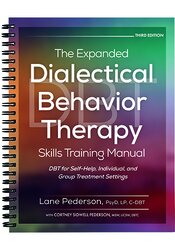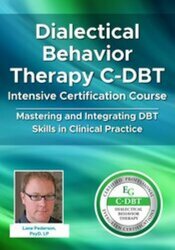How to Engage Clients and Provide DBT More Effectively

As DBT therapists, we know that teaching the skills is only half the battle. The real challenge is making them resonate with clients in a way that sticks. This can be especially tricky in individual therapy sessions where the structure and interaction of a group setting aren't available.
Over the years of training thousands of clinicians, I’ve heard a common concern: How do I bring DBT skills to life in my one-on-one sessions? Below are some key strategies to make DBT psychoeducation more engaging, dynamic, and clinically effective with individual clients.
DBT Tips for Engaging Clients in Individual Therapy
1. Focus on Interactivity
Clients are more likely to retain what they see, say, and do. Rather than relying solely on verbal explanations, look for opportunities to make skills training interactive. Use visual cues, diagrams, or even simple drawings on a whiteboard or piece of paper. This adds dimension to the conversation and helps reinforce key points.
2. Tie Skills to Real-Life Goals
Clients are more motivated to learn and use DBT skills when they understand how the skills connect to their life goals. Before diving into skill instruction, take time to discuss what the client is working toward, whether it’s improved relationships, emotion regulation, or reducing self-destructive behaviors. Then link each new skill directly to those goals.
3. Use Psychoeducation to Normalize the Process
Many clients feel shame or confusion about their emotional reactions. Introducing foundational DBT concepts like the three states of mind (Emotion Mind, Reasonable Mind, and Wise Mind) can be powerful for validation. It helps clients understand that they aren’t “broken”—they’re human, and DBT offers concrete ways to navigate life more skillfully.
4. Prioritize Repetition & Reinforcement
Skills don’t land the first time. Return to the same concepts regularly and integrate them into your ongoing clinical conversations. For example, if a client is struggling with an interpersonal conflict, you might revisit the DEAR MAN skill, even if you first introduced it weeks ago.
5. Don’t Skip the Diary Card or Chain Analysis
Even in individual sessions, the diary card and behavioral chain analysis are invaluable tools. The diary card gives structure to self-monitoring and offers real-time insight into the client’s emotional and behavioral patterns. Meanwhile, chain analysis allows you to collaboratively unpack problem behaviors—looking at what triggered them, what vulnerabilities were present, and what consequences followed—so you can guide the client in identifying skills that could be applied differently next time.
These tools might seem basic, but they’re foundational to helping clients make meaningful change.
6. Highlight Emotion Regulation as the Core Target
Unlike CBT, which tends to zero in on thought distortions, DBT is grounded in emotion-focused work. Keep this front and center. Clients often don’t realize how much their behaviors are driven by dysregulated emotions. When you teach skills like opposite action, PLEASE, or checking the facts, always link them back to how they help create emotional stability.
7. Be Dynamic: Teach with Stories, Metaphors, and Humor
DBT doesn’t have to be dry or clinical. Use metaphors (e.g., wise mind as the captain of a ship navigating between stormy emotion mind and cold reason mind), pop culture references, or humorous analogies to illustrate skills. If it’s memorable, it’s teachable.
Effective DBT skills training in individual therapy is absolutely possible. It just requires a thoughtful, engaging approach. Keep things visual, link skills to client goals, and reinforce the basics consistently. When clients see that skills work in their real lives, their motivation to practice deepens.
And remember: you don’t need to be perfect. DBT is as much about the process as it is the protocol. Keep showing up skillfully, and your clients will too.

The third edition of the bestselling, award-winning The Expanded DBT Skills Training Manual is finally here! Featuring over 75 worksheets, skills-building exercises, and practical guidelines you can u

This unique training offers a deeply interactive learning experience and grounding in Dialectical Behavior Therapy. You’ll join award-winning DBT author Dr. Lane Pederson as he guides you through this intensive 8-week training to help you gain the confidence and expertise you need to successfully integrate DBT into your clinical practice.






